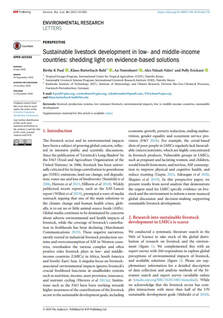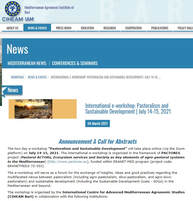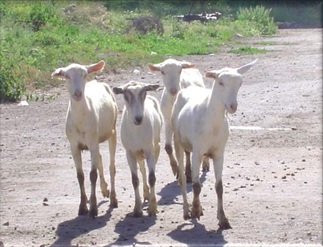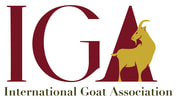 1. Introduction The livestock sector and its environmental impacts have been a subject of growing global concern, reflected in intensive public and scientific discussions. Since the publication of ‘Livestock’s Long Shadow’ by the FAO (Food and Agriculture Organization of the United Nations) in 2006, livestock has been universally criticized for its large contribution to greenhouse gas (GHG) emissions, land use change, soil degradation, water use and loss of biodiversity (Steinfeld et al 2006, Herrero et al 2015, Hilborn et al 2018). Widely publicized recent reports, such as the EAT-Lancet report (Willett et al 2019), prompted a wave of media outreach arguing that one of the main solutions to the climate change and human health crises, globally, is to eat no or little animal source foods (ASFs). Global media continues to be dominated by concerns about adverse environmental and health impacts of livestock, while the coverage of livestock’s contribution to livelihoods has been declining (Marchmont Communications 2019). These negative narratives, mostly rooted in industrial livestock production systems and overconsumption of ASF in Western countries, overshadow the various complex and often positive roles livestock plays in low- and middle income countries (LMICs) in Africa, South America and South(-East) Asia. A singular focus on livestock associated environmental impacts ignores livestock’s crucial livelihood functions in smallholder systems such as nutrition, income, asset provision, insurance, and nutrient cycling (Herrero et al 2013a). Institutions such as the FAO have been working towards higher awareness of the contributions of the livestock sector to the sustainable development goals, including economic growth, poverty reduction, ending malnutrition, gender equality and ecosystem service provision (FAO 2018). For example, the cereal-based diets of poor people in LMICs regularly lack bioavailable (micro)nutrients, which are highly concentrated in livestock products. Vulnerable groups in LMICs, such as pregnant and lactating women, and children, would benefit from more, and not less, ASF consumption to improve physical and cognitive health, and reduce stunting (Gupta 2016, Adesogan et al 2020, Shapiro et al 2019). In this perspective paper, we present results from novel analysis that demonstrate the urgent need for LMIC-specific evidence on livestock and the environment to inform a more nuanced global discussion and decision-making supporting sustainable livestock development.
0 Comments
 Announcement & Call for Abstracts The two-day e-workshop “Pastoralism and Sustainable Development” will take place online (via the Zoom platform) on July 14-15, 2021. The international e-workshop is organized in the framework of PACTORES project (Pastoral ACTORs, Ecosystem services and Society as key elements of agro-pastoral systems in the Mediterranean) (http://www.pactores.eu), funded within ERANET-MED program (project code: ERANETMED2-72-303). The e-workshop will serve as a forum for the exchange of insights, ideas and good practices regarding the multifaceted nexus between pastoralism (including agro-pastoralism, silvo-pastoralism, and agro-silvo-pastoralism) and sustainable development (including the Sustainable Development Goals - SDGs) in the Mediterranean and beyond. Job Description:
The Department of Animal and Dairy Sciences is seeking an Assistant Extension Professor for a 12-month tenure track (60% extension/40% Research) position to develop a swine management extension program and a research program that emphasizes swine growth and development and/or fresh or processed pork production. The Animal and Dairy Sciences Department currently houses approximately 380 undergraduate students, 20 graduate students, and 22 faculty, both on campus at research and extension centers throughout Mississippi. The Department conducts teaching, research and extension activities on the 1200 acre south farm which includes a small research swineherd and research pens for over 150 animals. Also, proximity to commercial swine facilities in the Southeast will increase research and extension opportunities for the successful candidate. The Department began operations on a new 15,000 ft2 Meat Science and Muscle Laboratory in July of 2018 and will move into a new 38,000 ft2 Animal and Dairy Sciences Building in June of 2019. The Department offers Bachelors of Science degrees with concentrations in Pre-Vet Science/Science, Animal Production, and Business and Industry. Both M.S. and Ph.D. degrees are offered from within the College of Agriculture and Life Sciences in Animal and Dairy Sciences. The World Development Report 2015: Mind, Society and Behavior holds new insights on how people make decisions; it provides a framework to help development practitioners and governments apply these insights to development policy.
READ MORE... CoP-PPLD is an on-line sharing network for practitioners, managers, researchers and other actors involved in pro-poor livestock development that want to exchange experiences, innovative approaches, best/next practices and other knowledge (including tacit) for the CoP-PPLD’s mutual learning.
Their shared goal is to learn from and give a voice to the livestock community regarding a wide range of issues affecting the poor livestock keepers today, contributing thus to livestock development as an instrument for poverty reduction. Contact them at [email protected] and they can help you to:
READ MORE…  Written by Narine Babayan Republic of Armenia Total surface area: 29.800 km2 Permanent population: 3.2 million Share of agriculture in the economy: 46 % Arable land: 280.793 ha Livestock numbers Cattle: 677,584 Sheep: 687,074 Goats: 30,500 Pigs: 139,799 Armenia is a small, mountainous, landlocked country with few natural resources. With an area of 29,800 km2, it borders Georgia, Azerbaijan, Iran, and Turkey. Following independence in 1991, policy reforms also included the privatization of the agricultural sector. Large state farms that had dominated the agricultural sector during the Soviet Union were disbanded. The dairy industry was depreciated and milk was consumed at the household level. Milk yields were low and processing conditions poor. The traditional animal husbandry and food processing methods did not meet the requirement to satisfy consumers. The low milk yield of native dairy goats and the lack of industrialization experience were the reason to consider goats as a small ruminant species for development. The milk production of native breeds is low (100 liters for 120 days of lactation season), resulting in inefficient farming. Efforts from national and international agencies towards agriculture development in Armenia led to improvement in living standards, and increased rural development and economic growth in rural areas. Livestock development was approached to provide high quality agro-products to satisfy the market demands among consumers as well as increased incomes at the farm level. In 2000, the United States Department of Agriculture (USDA) started a cattle and goat genetic improvement program in Armenia in close collaboration from the Armenian Agrarian University and the Armenian Ministry of Agriculture. The native breeds that have special adaptive traits such as disease resistance, adaptation to the local climatic conditions, the ability to digest low-quality feed and to survive with reduced or uncertain supplies of feed and water are the “basic sources” for the ongoing genetic improvement project. The Goat Industry Development Project (GIDP) was launched by the USDA to aid Armenian agriculture in developing an independent and economically viable dairy goat sector, product manufacturing, and marketing industry through technology transfer. Investments on Pro-Poor Development Projects on Goats: Ensuring Success for Improved Livelihoods7/23/2013 By Dr. Devendra
ABSTRACT: The elements that determine the success of development projects on goats and the prerequisites for ensuring this are discussed in the context of the bewildering diversity of goat genetic resources, production systems, multifunctionality, and opportunities for responding to constraints for productivity enhancement. Key determinants for the success of pro-poor projects are the imperatives of realistic project design, resolution of priorities and positive impacts to increase investments and spur agricultural growth, and appropriate policy. Throughout the developing world, there exist 97% of the total world population of 921 million goats across all agro-ecological zones (AEZs), including 570 breeds and 64% share of the breeds. They occupy a very important biological and socio-economic niche in farming systems making significant multifunctional contributions especially to food, nutrition and financial security, stability of farm households, and survival of the poor in the rural areas. Definitions are given of successful and failed projects. |
IGA Blog
The International Goat Association promotes goat research and development for the benefit of humankind, to alleviate poverty, to promote prosperity and to improve the quality of life. Archives
May 2024
Categories
All
|
|
International Goat Association
2516 Millbrook Rd., Little Rock, AR72227 USA email: [email protected] -454-1641 |

 RSS Feed
RSS Feed